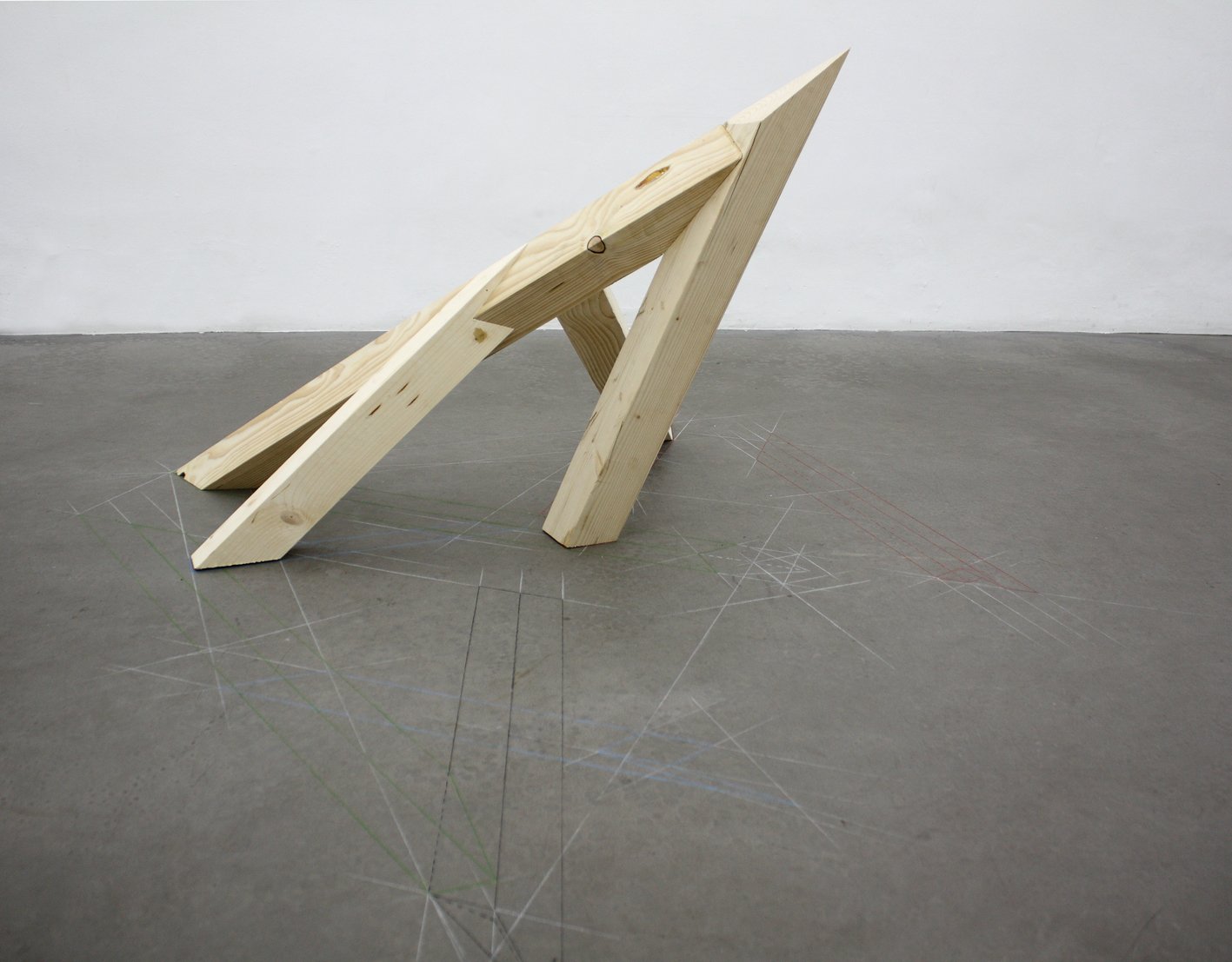
SCHLEICHER/LANGE PARIS
DIOGO PIMENTÃO: LONGEUR SANS LARGEUR / POINT SANS PARTIE
10 September, 2011 - 29 October, 2011








-
Diogo Pimentão’s work revolves around drawing but also encompasses sculpture, performance and a conception of matter as residue. Attracted to the “leftovers” of the drawing process - such as powdered graphite or strips of tape used to stick the paper to the wall - fragments or accidental traces are often his starting point for creating an exhibition. For his first solo show at the gallery, he has been inspired by the physical gestures associated with his work: rubbing a graphite drawing with a fragment of the plastic packaging from a sheaf of paper. The fragment in question became the piece “Codificado - impressão transparente” (2011). The pressure of the artist’s fingers as he worked has left an imprint on the transparent plastic where the product information is printed in black. The fingerprints and bar codes, two sorts of coded information bearing a trace of the identity of the subject and the object, therefore find themselves side by side. For Diogo Pimentão, drawing is thus related to contact. From this empirical moment of radical reconciliation between two entities he brings about a switch from the thing that is represented to the potential of traces and vestiges. Drawing is not merely a question of representation from afar, of the relationship between eye and hand, but between two matters that imprint themselves onto each other, and the information that arise from this contact. In this way, “Données” (2011) - Data - is a reading of our digital age: boxes of CDs containing data bear the mark of burning, black spots where the plastic has gone soft and burned. Abstract information has, however, been at work in drawing for a long time. It is at work in projects, even in simple sketches. The most enigmatic piece in the exhibition (awaiting a title at the time of writing) is a sort of potential fall of a wooden strut - which is already in itself a part of the drawing - a few moments of whose trajectory are drawn on the ground with carpenter’s pencils. This piece makes drawing and sculpture into descriptive geometry with an accidental movement, as abstract as a burnt CD, a bar code or a fingerprint. And this is where the question of representation arises: at the moment of contact or of mathematical figuration of movement, is there a representation? “Sensitivo” (2011) sets us on the path to a possible answer. Cuttings of prints of unidentifiable parts of the artist’s body (left and right hands and arms) are pinned on a surface. When the thing becomes information, or rather, carries in it information taken from between the matter and the surface - here, skin and graphite - what sort of representation is it? Certainly a potential presence shown through the mark of an absence. Absence of the moment of the imprint, of the gesture that has revealed it, of the body that has let its image be recorded there. Presence, in the surface seen as matter and of matter (here, the skin) seen as a surface. This strength of the potential of drawing, both in material and on a blank page, is present in another new piece (in the “Parcours” series). A piece of paper caught between two concrete parallelepipeds is installed between the wall and the ground, as if it were an architect’s model contemplating possible volumes from a long shot. But also by presenting a reminder that a page is first and foremost a surface on which writing or drawing can be inscribed. This gathering of disciplines but also of their possible languages makes Diogo Pimentão’s work a study of the heterogeneity of the expression of the sensory for which drawing is an elementary territory.